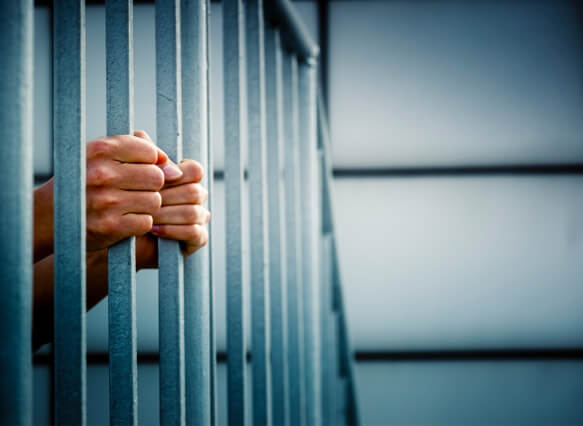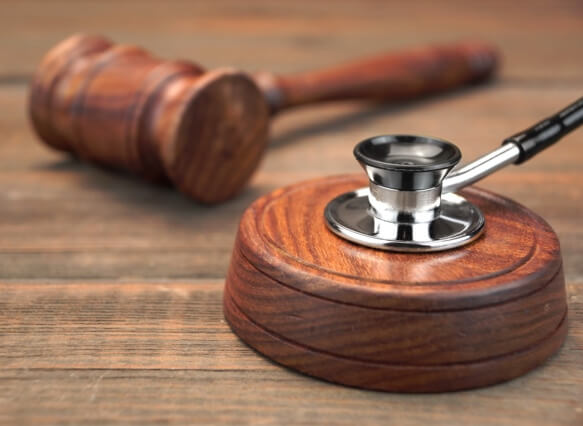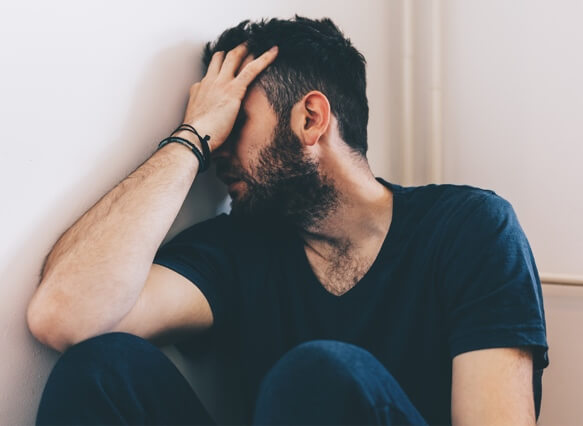Activists and health care professionals across the country have been trying to convince policymakers that addiction isn’t a law enforcement issue for years. They argue that drug abuse is a public health issue, and legislators should support efforts to promote access to treatment instead of incarcerating users.
The problem becomes complicated when people who use drugs engage in criminal activity. Minor possession of illicit drugs may not warrant long prison sentences, but drug trafficking and related violence might.
It’s a complex issue because people who commit crimes often deserve punishment, but many of them also require addiction and mental health treatment. The National Council on Alcoholism and Drug Dependence (NCADD) estimates that 50 percent of state and federal
prisoners meet the clinical criteria for a substance use disorder, but only 20 percent receive
substance abuse treatment.
In May 2016, 46 percent of all federal inmates in the country were serving sentences for drug-related convictions.
80%of offenses leading to incarceration involve alcohol or other drugs.
40%of traffic fatalities involve alcohol.
37%of inmates say they were under the influence of alcohol when they were arrested.
40%of violent crimes involve alcohol.
It’s also estimated that 95 percent of inmates consume alcohol or other drugs after leaving confinement, and between 60 and 80 percent commit a drug-related crime after being released.
Treatment to prevent future alcohol or drug use is an effective way to break the cycle, according to decades of research by the National Institute on Drug Abuse. That’s why courts offer alternatives to confinement or less severe sentences to individuals who agree to complete addiction treatment programs.
Looking for a treatment?Learn more about court-ordered rehab.
What are drug courts?
Almost any court of law can require drug-related offenders to participate in educational or rehabilitative programs. But several jurisdictions have created specialized courts designed to improve outcomes for defendants accused of drug-related crimes.
Drug courts provide a comprehensive therapeutic experience from the time after a person’s arrest to the time he or she completes all of the requirements of parole or probation. Court-ordered treatment allows people convicted of drug-related crimes to receive treatment for a substance use or mental health disorder.
“Instead of locking people away, these programs give them an opportunity to engage in evidence-based treatment,” Chris Deutsch, director of communications for the National Association of Drug Court Professionals, told DrugRehab.com. “Drug court holds people accountable while connecting them to lifesaving treatment.”
A treatment team composed of a judge,
lawyers, case managers, health providers and therapists works with the defendant to provide effective treatment and ensure legal compliance.
The members of the team remain in regular communication. They encourage support from family members and friends during hearings, therapy and discharge.
Drug courts can require stays at detox centers, inpatient rehab programs, outpatient therapy, self-help groups and a variety of other treatment services. They may also require community service hours, completion of vocational training and proof of abstinence through regular drug tests.
Programs recognize that relapse is a common aspect of the recovery process, but they can’t turn a blind eye to continued alcohol and drug use. Courts impose consequences for failed alcohol or drug tests. The consequences increase in severity with repeated noncompliance.
Drug courts differ in the resources they provide and the populations they’re designed for.
- Adult Courts
- Adult courts strive to reduce substance abuse and recidivism by assessing needs, providing treatment, monitoring behavior and incentivizing positive behavior with rewards.
- Juvenile Courts
- Juvenile courts have similar goals but emphasize education, family counseling and family accountability more than most adult courts.
- Family Courts
- Family courts work with parents with substance use disorders to maintain family stability and child custody. The treatment is similar to adult courts, but additional programming teaches participants parenting skills. The court also helps children while their parents are in treatment.
Other courts have specialized programs for defendants with a history of driving under the influence, exposure to military combat or mental health issues.
Participation in drug court programming continues after standard treatment or therapy ends. Drug courts help individuals reintegrate into society and find employment, education and housing.

Types of Court-Ordered Treatment
Forcing someone to abstain from alcohol or drug use through incarceration doesn’t cure addiction. It may force them to
detox from the substances, but it doesn’t teach them to avoid relapse or prepare them for life without drugs when they’re released.
In fact, forced abstinence can be dangerous for people with severe substance use disorders. Untreated withdrawal from alcohol or benzodiazepines can be deadly.
Common treatment services provided by correctional programs include intensive supervision, day reporting, vocational education and work release, according to a 2007 study published in the Journal of Substance Abuse Treatment.
Courts can also order offenders to complete drug rehab programs, to be tested for alcohol or drugs, and to participate in support group meetings. These requirements can be completed during incarceration, or they can be required during probation or a stint at a
halfway house.
-
Educational Programs
Educational and awareness programs are the most common types of treatment provided by the criminal justice system, according to the Journal of Substance Abuse Treatment.
- 71 percent of prisons
- 61 percent of jails
- 53 percent of correctional agencies
The educational programs are the most easily accessible treatment programs in the majority of prisons and jails. Correctional officers often use the programs to identify offenders who may need more intensive treatment.
-
Group Counseling
Group counseling is the second-most-common therapy provided by criminal justice organizations. It’s usually based on
12-step models and focuses on developing stress management and problem-solving skills. In-house staff lead the majority of group counseling sessions. About 70 percent of the facilitators possess some type of formal training, and 40 percent hold treatment certifications.
- 54 percent of prisons for four hours or less per week.
- 46 percent of prisons for between five and 25 hours per week.
- 11 percent of prisons for 26 hours or more per week.
Relapse prevention groups were also available in 44 percent of prisons. Several prisons offer a variety of overlapping services, such as groups that meet four hours a week, groups that meet more than five hours per week and relapse prevention groups.
-
Residential Programs
The Federal Bureau of Prisons’ Residential Drug Abuse Program (RDAP) is the most intensive treatment program for offenders with substance use disorders. It’s a therapeutic community separated from the general prison population. RDAP participation usually lasts nine months and includes involvement in therapeutic programs and work, school or other vocational programs.
Studies on RDAPs indicate participants are less likely to relapse and commit future crimes than the general prison population. In 2015, there were 89 RDAPs in 77 locations across the U.S.
-
Outpatient Programs
Outpatient treatment programs can be provided by correctional agencies or through contracts with behavioral health centers in the community.
In the federal prison system, outpatient treatment involves
cognitive behavioral therapy designed to teach participants how to avoid criminal activity, build communication skills, think rationally and adjust to the community.
The most common participants in outpatient treatment are offenders who have short sentences, do not meet the criteria for
residential treatment or are transitioning back to the community.
-
Community-Based Programs
Community-based programs help offenders during times of transition, which is when most people are at the highest risk for relapse. Participation is common among residents of halfway houses or individuals on home confinement.
The Federal Bureau of Prisons partners with community treatment services to provide a variety of social work, counseling and other psychiatric services to offenders in transition. Crisis intervention services are also available to treat
depression, grief, anxiety and adjustment issues.
The programs communicate with probation officers and provide them with comprehensive discharge plans to set them up for success upon release.
Who Can Courts Order to Attend Rehab?
Adults, juveniles and parents with substance abuse problems attend drug courts when they’re accused of drug-related crimes.
- Possession or trafficking of drugs.
- Crimes directly related to drugs, such as stealing money to pay for drugs.
- Illegal behavior that increases the risk of drug abuse, such as associations with other illicit drug users.
Each state and jurisdiction differs in its criteria for participation in drug courts.
- Arrest for a drug-related crime.
- No history of sexual abuse or violence.
- Less than three drug-related offenses.
- Evidence of intoxication when the crime was committed.
- Addiction contributed to the crime.
- Willingness to plead guilty.
- Willingness to comply with drug court requirements.
A history of alcohol or drug abuse is not the sole reason a person attends a drug court or is ordered to seek treatment. People with a history of mental illness may be required to receive more intensive treatment than others. Offenders who do not meet the criteria for a substance use disorder may be required to seek less intensive treatment, such as educational classes.
An offender’s low motivation should not deter courts from ordering treatment. A number of behavioral therapies, such as motivational enhancement therapy, are designed to encourage a patient’s desire to seek help.

Can You Refuse Court-Ordered Rehab?
Court-ordered rehab is usually offered as an alternative to imprisonment, as a parole requirement or as a probationary requirement. Individuals offered treatment can usually deny it and choose a longer jail sentence or even harsher legal penalties.
The only time an offender can refuse court-ordered treatment and not face additional punishment is if the treatment violates his or her constitutional rights.
More than 20 cases have upheld a person’s right to refuse treatment on religious grounds.
- Warner v. Orange County
- In 1997, the U.S. Court of Appeals for the Second Circuit ruled that Robert Warner’s constitutional rights were violated when he was required to attend Alcoholics Anonymous meetings, which require participants to accept the existence of a higher power, to meet his probation requirements. Warner, an atheist, had been convicted of three DUI offenses in less than two years and was not offered any alternative forms of treatment.
- Pirtle v. California Board of Prison Terms
- In 2010, the U.S. Court of Appeals for the Ninth Circuit ruled that John Pirtle’s due process rights had been violated because a board denied him parole based on his refusal to participate in a 12-step treatment program. Pirtle was an atheist who had a history of alcohol abuse and was convicted of murdering his wife while intoxicated.
- Hazle v. Crofoot
- In 2013, the U.S. Court of Appeals for the Ninth Circuit ruled that Barry Hazle’s constitutional rights had been violated when he was ordered to participate in a 12-step drug treatment program and was fined for refusing. Hazle had refused to participate because he was an atheist.
Most rulings cite Justice Anthony Kennedy’s opinion in Lee v. Weisman when he wrote that: “It is beyond dispute that, at a minimum, the Constitution guarantees that government may not coerce anyone to support or participate in religion or its exercise.”

Who Pays for Court-Ordered Treatment?
Illicit drug abuse cost the United States more than $193 billion in 2007, according to a 2011 analysis by the National Drug Intelligence Center. The costs to the criminal justice system — including law enforcement, judicial and correctional costs — totaled $56 million. The majority of those costs fell on the U.S. taxpayer.
While taxpayers bear the brunt of many drug-related criminal justice costs, defendants pay for their own treatment the majority of the time. The
cost of rehab is dependent on the facility, the type of treatment program and the length of treatment. It can range from $5,000 to $30,000.
If time in a halfway or sober living house is required, the resident will almost always have to pay the costs of rent and other bills. Support group meeting attendance is free, but the offender will usually have to pay costs of transportation. Most offenders pay for
treatment with the help of insurance.
Illicit drug abuse cost the United States more than $193 billion in 2007, according to a 2011 analysis by the National Drug Intelligence Center.
Ready to Make a Change?Get help with your addiction today!
Get Help Now
<h2″>What Happens if You Violate Court-Ordered Treatment?
The consequences for violating a court-ordered treatment agreement depend on a number of factors. An offender usually agrees to participate in treatment in exchange for a shortened sentence, reduced fines or fewer community service hours. When people violate the agreement, the court can order them to serve the original sentence.
The punishment also depends on the violation. A relapse may result in increased monitoring, drug tests and time in therapy. Possessing large amounts of drugs or selling drugs may result in incarceration and large fines.
The defendant’s criminal history, time in treatment and behavior during treatment are also contributing factors. Repeated violations carry increasingly severe consequences.

How Effective is Court-Ordered Treatment?
Many people claim legal pressure is an important reason for seeking treatment for addiction. Legal pressure can increase attendance and time in treatment, leading to better treatment outcomes, according to multiple studies.
However, the effectiveness of treatment is largely dependent on a person’s willingness to accept change and fully participate. For it to be successful, offenders must put all of their effort into
recovery.
Donna Boggs, a former drug court participant in Reno County, Kansas, credits court-ordered treatment with helping her overcome cocaine addiction.
“Drug court gave me the support that I needed to get sober,” Boggs told DrugRehab.com. “And today, six years later, I am still sober.”
Studies on legally-mandated treatment indicate most people who participate have outcomes equal to or better than patients who voluntarily seek treatment. The best outcomes are associated with at least 90 days of treatment. Individuals who spend at least three months in therapy exhibit significantly reduced rates of drug abuse and criminal behavior.
- Reduce relapse
- Reduce recidivism
- Reduce inmate misconduct
- Increase acceptance of societal norms
- Increase education and employment rates upon discharge
- Improve overall health
- Improve interpersonal relationships
“Drug courts provide participants with the resources necessary to reach recovery and get their lives back on track,” said Deutsch. “These programs give [participants] the tools needed to be healthy, productive citizens.”
Effective court-ordered treatment programs are beneficial to society and offenders. Society is positively impacted by increased productivity, reduced crime rates and diminished health care costs. Individuals in recovery overwhelmingly report increased health, earning capacity and happiness.
Disclaimer: The Recovery Village, behavioral health care partner of DrugRehab.com, does not accept Marchman Act or Baker Act patients.
Medical Disclaimer: DrugRehab.com aims to improve the quality of life for people struggling with a substance use or mental health disorder with fact-based content about the nature of behavioral health conditions, treatment options and their related outcomes. We publish material that is researched, cited, edited and reviewed by licensed medical professionals. The information we provide is not intended to be a substitute for professional medical advice, diagnosis or treatment. It should not be used in place of the advice of your physician or other qualified healthcare provider.
Author
Senior Content Writer,
DrugRehab.com
Chris Elkins worked as a journalist for three years and was published by multiple newspapers and online publications. Since 2015, he’s written about health-related topics, interviewed addiction experts and authored stories of recovery. Chris has a master’s degree in strategic communication and a graduate certificate in health communication.
View Sources
- Butzin, C.A. et al. (2006). Effect of drug treatment during work release on new arrests and incarcerations. Retrieved from https://www.cdhs.udel.edu/content-sub-site/Documents/Publications/Effect%20of%20Drug%20Treatment%20During%20Work%20Release%20on%20New%20Arrests%20and%20Incarcerations.pdf
- Federal Bureau of Prisons. (n.d.). Substance Abuse Treatment. Retrieved from https://www.bop.gov/inmates/custody_and_care/substance_abuse_treatment.jsp
- Federal Bureau of Prisons. (2016, May 28). Offenses. Retrieved from https://www.bop.gov/about/statistics/statistics_inmate_offenses.jsp
- Kinlock, T.W. et al. (2009, October). A randomized clinical trial of methadone maintenance for prisoners: Results at 12 months post-release. Retrieved from http://www.ncbi.nlm.nih.gov/pubmed/19339140
- Legal Information Institute. (n.d.). Lee v. Weisman. Retrieved from https://www.law.cornell.edu/supremecourt/text/505/577
- National Council on Alcoholism and Drug Dependence. (2015, June 27). Alcohol, Drugs and Crime. Retrieved from #
- National Drug Intelligence Center. (2011, April). The Economic Impact of Illicit Drug Use on American Society. Retrieved from https://www.justice.gov/archive/ndic/pubs44/44731/44731p.pdf
- National Institute on Drug Abuse. (2014, April). Principles of Drug Abuse Treatment for Criminal Justice Populations. Retrieved from https://www.drugabuse.gov/sites/default/files/txcriminaljustice_0.pdf
- Prendergast, M.L. et al. (2002, June 1). The effectiveness of drug abuse treatment: a meta-analysis of comparison group studies. Retrieved from http://www.ncbi.nlm.nih.gov/pubmed/12062779
- SMART Recovery. (n.d.). First Amendment Cases. Retrieved from http://www.smartrecovery.org/courts/casesprint.pdf
- Taxman, F.S., Perdoni, M.L. & Harrison, L.D. (2007, March 9). Drug treatment services for adult offenders: The state of the state. Retrieved from http://www.ncbi.nlm.nih.gov/pmc/articles/PMC2266078/
- U.S. Department of Justice. (2016, May). Drug Courts. Retrieved from https://www.ncjrs.gov/pdffiles1/nij/238527.pdf
- U.S. Department of Justice. (1997, January). Defining Drug Courts: The Key Components. Retrieved from http://www.courts.ca.gov/documents/DefiningDC.pdf
 Addiction
Addiction
 Treatment
Treatment
 Faith & Religion
Faith & Religion
 Active Recovery
Active Recovery
 Our Community
Our Community







